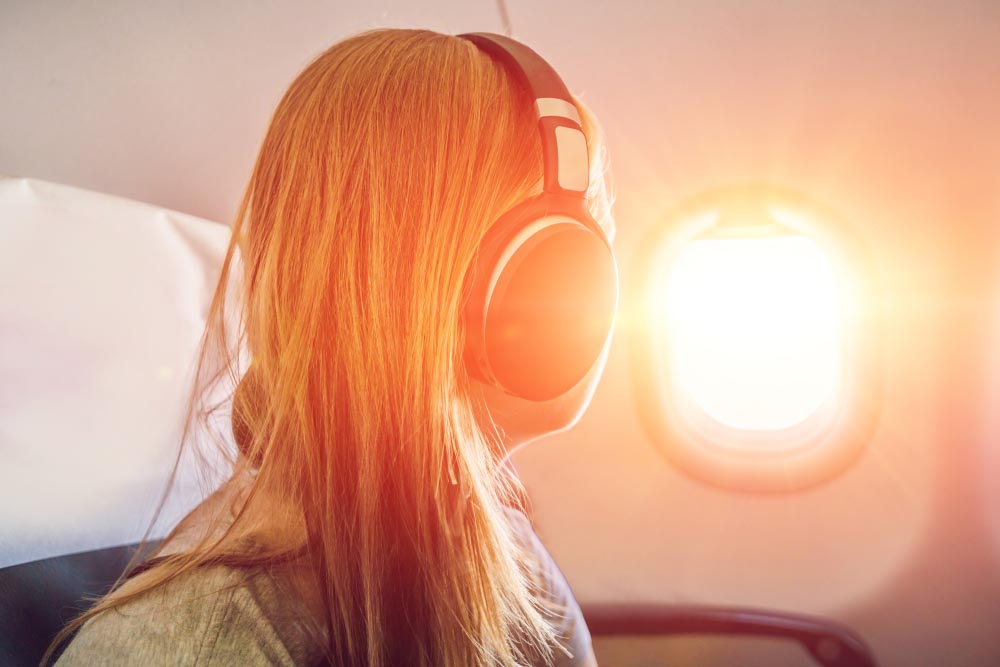Pteromerhanophobia, or fear of flying, affects many people around the world and has many causes, but there is hope for sufferers.
The causes of fear of flying are complex and manifold. There is the quite obvious fear of crashing but this is often just a small part of the overall fear. Aeroplanes also trigger claustrophobia and acrophobia (fear of heights), while recent world events have added the fear of terrorism and hijacking. Many germaphobes also hate being an enclosed space with hundreds of strangers.
To those who don’t suffer this affliction the solution seems easy: Just use logic. This does actually help many people.
Dr. Arnold Barnett, of the Massachusetts Institute of Technology, conducted extensive research in the field of commercial flight safety. He found the following:
The death risk per flight was one in seven million.
Even if you took a flight every day of your life, it would take you nineteen thousand years before you would succumb to a fatal accident.
Flying coast-to-coast in the USA is ten times safer than making the trip by train.
A sold-out 727 jet would have to crash every day of the week, with no survivors, to equal the highway deaths per year in the USA alone.
You are nineteen times safer in a plane than in a car.
But any sufferer of a phobia will tell you that logic doesn’t always help. The fear is often irrational, yet it remains overwhelming.
There are a few things you could do to suppress it:
Understanding the fear and trying to deal with it rationally
Recognizing the triggers that set you off and working to avoid or ignore them
Using drugs like tranquilizers or sleeping pills
Seeking professional help
Almost all of these have some drawback though. As we stated earlier, phobias are not rational, while taking drugs often increased someone’s anxiety as they now have the added fear of being unconscious and powerless to act when something does go wrong. While psychiatric help would definitely work, it is expensive and not freely available in many countries. You also need something to deal with the fear while you’re experiencing it rather than simply preparing for it in advance.
One of the only freely available and proven methods of dealing with Pteromerhanophobia to date has been meditation. As the phobia is all in your mind, it makes sense to work to train your mind against it. This is where Synctuition comes in.
Synctuition’s groundbreaking combination of 3D meditation, binaural beats and guided meditation will help you reach a meditative state easily, anywhere.
The beauty of Synctuition is that you only need a pair of stereo headphones to meditate. We suggest using a pair of good, noise cancelling ones and using the Synctuition app for mobile phone, as this allows you to listen to the tracks while offline.
Make sure you have at least 25 minutes in the airport before you depart to listen to your favorite track. Find a quiet spot and relax. This should put you in the right frame of mind to deal with the stress of take-off.
Once airborne, you can listen to another track every time you start feeling fearful. This will relax your mind and body while helping you deal with the stress of fear successfully. The 3D soundscapes will help your brain to take a journey to a safe, pleasant place, which will remove the immediate reason for the fear.
We suggest that those suffering from severe phobia start off by taking short-haul flights and gradually work their way up to longer distance journeys and always do so in conjunction with professional help.
For those whose fear simply makes flying an extremely unpleasant ordeal, Synctuition is guaranteed to start working immediately and offer both reduction of fear levels before flights and therapy during the actual flight.










![150 Benefits of Meditation [2019 Edition] Young men listening to a meditation program](https://test.synctuition.com/web/wp-content/uploads/2019/01/CoverImage-Blog1-218x150.png)

